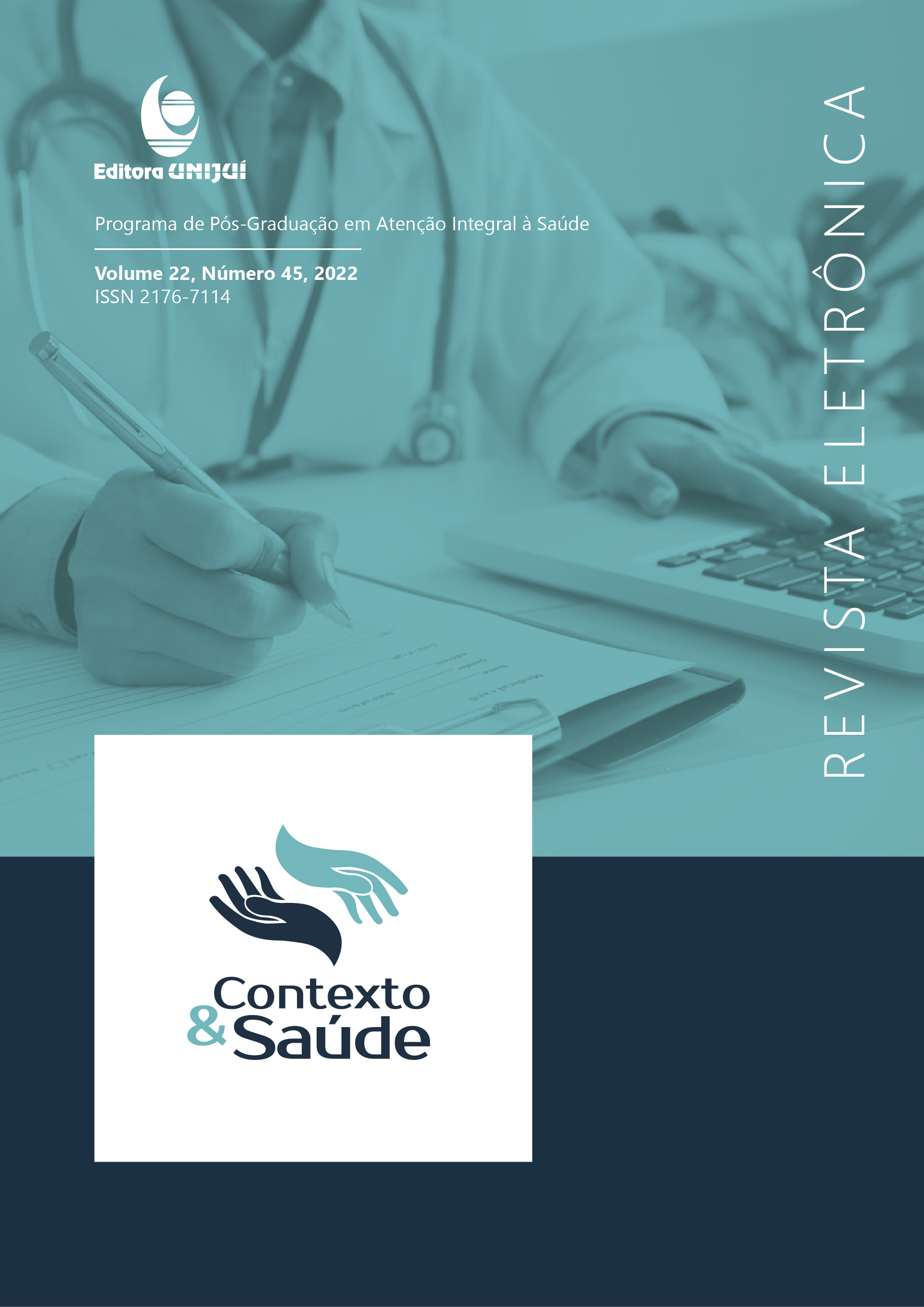Análise comparativa do perfil do fisioterapeuta, como parte integrante da equipe de saúde nos núcleos ampliados de saúde da família e atenção básica
DOI:
https://doi.org/10.21527/2176-7114.2022.45.12329Palabras clave:
Atenção Primária à Saúde, Fisioterapeutas, Trabalho, Estudos TransversaisResumen
Identificar o perfil de fisioterapeutas e de seu trabalho e compará-los aos outros profissionais do Nasf-AB de duas capitais do Brasil. Trata-se de um estudo transversal, quantitativo, realizado entre janeiro e março de 2020 em João Pessoa/PB e Campo Grande/MS, com 182 trabalhadores do Nasf-AB. Utilizou-se um instrumento estruturado, com questões que caracterizavam os participantes e
seu processo de trabalho. A comparação entre “fisioterapeutas” e “demais profissionais” foi realizada por meio do teste do qui-quadrado (12 variáveis nominais) e do teste de Mann-Whitney (8 variáveis quantitativas). A maioria dos fisioterapeutas eram mulheres, com idades entre 55-45 anos, há 3 anos no Nasf-AB, vinculados à equipe há mais de 18 meses, desejava trabalhar no Nasf-AB, formados há mais de cinco anos, satisfeitos com seu trabalho e de equipe e com o quanto suas práticas são centradas nas necessidades dos usuários e insatisfeitos com a infraestrutura para atuarem. Dedicavam 50% ou mais de sua carga horária semanal aos atendimentos individuais, entre 10% e 40% aos coletivos, de 20% a 50% com outros profissionais do Nasf-AB e de 10% a 40% com a ESF. O pouco investimento em especializações em APS diferenciou os fisioterapeutas dos demais profissionais (p=0,049). Os fisioterapeutas realizaram mais especializações em áreas não associadas à APS, no entanto as demais características de perfil e de processo
de trabalho não os diferenciaram. A utilização de variáveis quantitativas, como os percentuais de tempo semanal dedicados aos atendimentos individuais, coletivos e com atividades com outros profissionais ampliaram a compreensão do trabalho do Nasf-AB.
Descargas
Publicado
Cómo citar
Número
Sección
Licencia

Esta obra está bajo una licencia internacional Creative Commons Atribución 4.0.
Ao publicar na Revista Contexto & Saúde, os autores concordam com os seguintes termos:
Os trabalhos seguem a licença Creative Commons Atribuição 4.0 Internacional (CC BY 4.0), que permite:
Compartilhar — copiar e redistribuir o material em qualquer meio ou formato;
Adaptar — remixar, transformar e criar a partir do material para qualquer fim, inclusive comercial.
Essas permissões são irrevogáveis, desde que respeitados os seguintes termos:
Atribuição — os autores devem ser devidamente creditados, com link para a licença e indicação de eventuais alterações realizadas.
Sem restrições adicionais — não podem ser aplicadas condições legais ou tecnológicas que restrinjam o uso permitido pela licença.
Avisos:
A licença não se aplica a elementos em domínio público ou cobertos por exceções legais.
A licença não garante todos os direitos necessários para usos específicos (ex.: direitos de imagem, privacidade ou morais).
A revista não se responsabiliza pelas opiniões expressas nos artigos, que são de exclusiva responsabilidade dos autores. O Editor, com o apoio do Comitê Editorial, reserva-se o direito de sugerir ou solicitar modificações quando necessário.
Somente serão aceitos artigos científicos originais, com resultados de pesquisas de interesse que não tenham sido publicados nem submetidos simultaneamente a outro periódico com o mesmo objetivo.
A menção a marcas comerciais ou produtos específicos destina-se apenas à identificação, sem qualquer vínculo promocional por parte dos autores ou da revista.
Contrato de Licença (para artigos publicados a partir de setembro/2025): Os autores mantém os direitos autorais sobre seu artigo, e concedem à Revista Contexto & Saúde o direito de primeira publicação.

